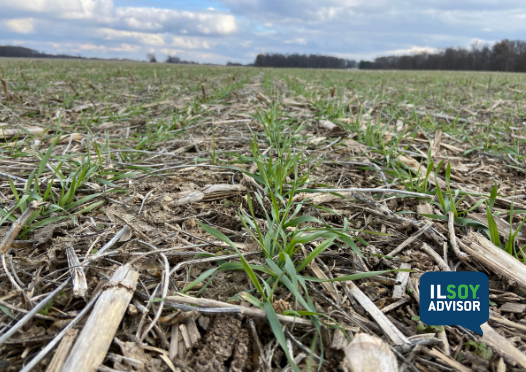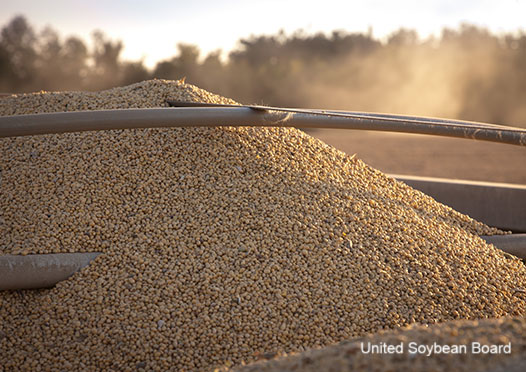ILSOYADVISOR POST
Rolling Soybeans
Some growers roll soybeans, but should you consider it? This practice started in western Minnesota and the Dakotas. Growers would roll fields after planting to push rocks and stones back into the ground and level out the field. It made harvesting and hitting higher yields easier because the heads could be run close to the surface and cut more pods.
But over the years this practice has morphed into rolling beans a bit later, after emergence, to increase branching and pod set. On a soybean plant, the growing point is at the top of the plant. This growing point exerts apical dominance over the plant and limits node set and branching Break the growing point and you sever apical dominance, perhaps resulting in more nodes and pods.
Several studies have been done on rolling soybeans with both yield gains and yields the same. Sometimes there is a response and sometimes not. Much like comparing the yields of soybeans planted in 15- and 30-inch rows or applying Cobra® at V2 or V3 to stress the plant and increase branching.
A recent Farm Journal test plot article, “Breaking Point for Soybean Stress,” looked at the impact of rolling on plant structure and reported that early rolling led to plant breakage while later rolling increased yield and reduced harvest loss. Their goal was to see if physical stress could induce more nodes and pods.
The field work was complete by Ken Ferrie, Illinois, and Missy Bauer, Michigan. A few key points in the article include:
- Early rolling, VE/V1 led to plant breakage, loss of cotyledons and plant loss
- Michigan: In 2015 a 3-bushel gain when rolled at V1/V2; In 2016 a 2.4-bushel gain when rolled V1/V2
- Michigan: 0.4 and 0.3 bushel increase in yield by reduction in harvest loss when rolled at V1 and V3, respectively
- Illinois: When rolled at VE/V1 a 1.2-bushel loss; when rolled at V1/V3 a 2.4-bushel gain
- Increase in pod numbers, 17% and 33% at VE/V1 and V2, respectively
Ferrie was quoted stating, “Your ultimate window of opportunity to use a roller to stress soybean plants for potential yield gains is between V1 to V3 growth stages. At this stage, the plant is more pliable, you can roll it or push it over and it still has the ability to bounce back.”
The question you need to answer is, “Will a 2- to 3-bushel or $18 to $27 net gain per acre offset the cost of purchasing and running the roller including tractor, fuel and labor per acre and return you a significant profit on top?” Many technologies add bushels, but do they add enough to provide a good return on investment? Personally, I question whether rolling soybeans provides a significant enough benefit if rocks aren’t in the picture.
Soybean agronomist Daniel Davidson, Ph.D. posts blogs on agronomy-related topics. Feel free to contact him at djdavidson@agwrite.com or ring him at 402-649-5919.





Comments
Add new comment